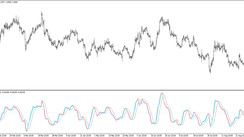The Crucial World of Interest Rate Parity: A Comprehensive Examination
Interest rate parity (IRP), a pivotal concept in the field of international finance, provides essential insights into the intricate interconnection between foreign exchange rates and interest rates. This theory is of paramount importance to understanding the delicate balance of international trade and global economic equilibrium. Although IRP is a cornerstone of financial theory, its layers of complexity and numerous implications necessitate an exhaustive exploration. This guide is an endeavour to provide a more comprehensive understanding of this concept.
1. Unpacking the Principle of Interest Rate Parity: An In-Depth Overview
Interest rate parity is a fundamental equation in foreign exchange markets, establishing a theoretical correlation between interest rates and currency exchange rates. In its basic form, IRP stipulates that the interest rate differential between two nations is equivalent to the differential between the forward and spot exchange rates of their respective currencies. This assertion operates under the premise that financial markets prevent riskless profit or arbitrage opportunities.
Conceptually, the presence of interest rate parity signifies a financial equilibrium wherein an investor would be indifferent between investing in one country or converting that investment into another currency and investing it in another country. In other words, the returns from borrowing in one country, converting those funds into a foreign currency, and investing in the other country would be equivalent to the return from a direct investment in the initial country, thereby eliminating any chance of arbitrage.
2. Covered and Uncovered Interest Rate Parity: A Dual Perspective
Interest rate parity can essentially be dissected into two core concepts: Covered Interest Rate Parity (CIRP) and Uncovered Interest Rate Parity (UIRP). Understanding these concepts is critical to comprehending the full breadth of IRP.
-
Covered Interest Rate Parity (CIRP)
CIRP, grounded in the existence of forward markets used to shield against the unpredictable nature of exchange rate fluctuations, suggests that the difference in interest rates between two countries is equivalent to the differential between the forward and spot exchange rates of their currencies. The presence of forward contracts nullifies the risks linked to exchange rate variations, thereby preemptively blocking any potential arbitrage opportunities. This condition ensures that the market maintains a state of equilibrium.
-
Uncovered Interest Rate Parity (UIRP)
Conversely, UIRP, unlike CIRP, focuses on future expectations of spot exchange rates, dismissing the role of forward contracts. According to UIRP, the expected return on an unprotected, or uncovered, foreign exchange investment in two disparate currencies is anticipated to be equivalent, provided that the investors are willing to accept the same level of risk.
A key inference from the UIRP model is that if a country's interest rate is lower than another's, its currency is expected to appreciate relative to the higher-interest-rate currency in the future. This anticipated appreciation arises from the increased demand for the lower interest rate currency, which in turn inflates its value over time.
3. A Critical Analysis of Interest Rate Parity
Despite their theoretical robustness, both CIRP and UIRP have been scrutinized and challenged. While Covered Interest Rate Parity generally holds true in the real world, Uncovered Interest Rate Parity often falls short as a reliable forecaster of future exchange rate movements. The divergence from UIRP can be accredited to the array of variables that influence exchange rates, including but not limited to, alterations in inflation rates, fluctuations in monetary policy, and shifting market sentiments.
Thus, while these conditions of interest rate parity can serve as excellent theoretical guideposts, they don't guarantee flawless practical utility. Economic actors should take note that they are not infallible indicators of future financial trends.
4. The Significance of Interest Rate Parity in Forex Trading
Understanding the concept of interest rate parity is crucial for forex traders. The foreign exchange market is highly reactive to alterations in interest rates and the corresponding differentials between countries, making IRP a valuable analytical tool for identifying potential trading opportunities.
When the condition of IRP is met, arbitrage opportunities are essentially non-existent. However, any deviations from IRP in the market conditions can be exploited by forex traders to secure arbitrage gains. This strategy might involve the following steps:
- Borrow funds in a currency with a low-interest-rate
- Convert the borrowed funds into a currency with a high-interest-rate
- Invest the converted funds in interest-bearing assets in the high-interest-rate currency
- Hedge the foreign exchange risk with a forward contract
Even in the presence of mispriced forward rates, traders can leverage the principles of IRP to capture a risk-free profit.
5. The Final Word
Interest rate parity, albeit complex, provides a foundational framework for understanding the relationship between interest rates and exchange rates. Mastering this concept can equip forex traders with the knowledge needed to make more informed decisions and potentially uncover profitable opportunities.
By meticulously dissecting and comprehending the nuances of this theory, financial professionals and economists can better interpret the dynamics of global markets. This understanding ultimately aids in managing financial risks and making informed investment decisions, bolstering our understanding of the mechanisms driving the global economy.





